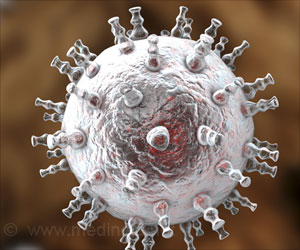The first paternity study of southern right whales has found a surprisingly high level of local breeding success for males.

The study found that most of the right whales born near the remote sub-Antarctic islands of New Zealand were fathered by males from the same local population, according to lead author Emma Carroll, who recently completed her doctorate at the University of Auckland.
"This finding gives us information on the breeding behavior of right whales, but more importantly it shows that the New Zealand population is relatively isolated from other populations in the region, including that of neighboring Australia," Carroll said.
In other words, male southern right whales don't get around much – and that kind of behavior is surprising.
"In other species of mammals, males usually disperse from their place of birth to seek new mating opportunities," said Scott Baker, associated director of the Marine Mammal Institute at Oregon State University, and co-author on the study. "But with right whales, it seems that local fidelity to breeding habitat is strong – for both males and females."
Southern right whales were hunted to near-extinction by commercial whaling, but some populations around New Zealand and Australia have slowly started to recover. Baker, who works out of OSU's Hatfield Marine Science Center in Newport, Ore., initiated the genetic study of right whales in the region in 1995 in part to assess the likelihood that they could recover.
Advertisement
The paternity analysis has also helped to explain the right whale mating behavior observed in the Auckland Islands, which is also a primary habitat for calving and nursing.
Advertisement
Carroll, Baker and colleagues gathered DNA from small skin samples collected during a 15-year period from 34 mother-calf pairs, and more than 300 males – about 30 percent of the male right whales in New Zealand.
Although they didn't match all of the calves with fathers, the proportion that did match was also 30 percent, consistent with the number of males sampled from the population. The authors then showed that it was highly unlikely that this many paternities would be assigned to local males if males from outside the New Zealand population were fathering calves.
"It is possible, but unlikely, that males from the Australian population have fathered some of the other calves," Carroll said. "We cannot exclude the possibility of the occasional visiting suitor."
Baker, who frequently provides advice to the International Whaling Commission on cetacean conservation genetics, said that although in-breeding could be a problem at very low numbers, local fidelity also has advantages.
"Along with preserving greater overall diversity, local fidelity may allow for habitat specialization and the transmission of cultural memory," he pointed out. "It becomes easier to pass along such things as locations of breeding and feeding grounds."
Although right whales demonstrate fidelity to their own population, the researchers say, they are anything but monogamous. Males compete in "sperm competition" through multiple mating encounters with different females, rather than physical confrontations with each other, as do males in most other species of mammals. This may be why male right whales have the largest testicles in the animal kingdom, the researchers noted in their study – up to six feet in diameter and weighing as much as a ton.
Source-Eurekalert








